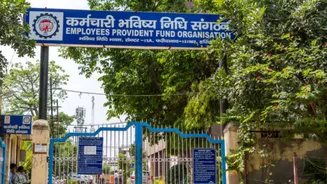Understanding EPS-95 Pension
The Employees' Pension Scheme 1995 (EPS-95) is a retirement plan established by the Employees' Provident Fund Organisation (EPFO) in India. This scheme
provides pension benefits to employees in the organized sector. It is funded by contributions from both the employer and the government. The EPS-95 offers a safety net for retirees, providing them with a regular income after their working life concludes. The scheme's design aims to offer financial security during retirement, thus ensuring a degree of financial stability for retirees and their families. This is crucial in a country where a significant portion of the population relies on social security programs for their post-employment income and well-being. The scheme plays a significant role in providing financial security for millions of workers across India. It is therefore vital to stay informed about its provisions, including potential enhancements or revisions, to effectively plan for one's retirement and financial future.
Factors Affecting Potential Hike
Several variables influence the possibility of an EPS-95 pension increase, with the primary one being the EPFO's financial health. The EPFO's investment returns play a key role, along with the overall economic climate. Higher returns from its investment portfolio would give the EPFO greater financial capacity to improve pension payouts. Another significant factor is the government's stance on social security. The government may provide extra funding or adjust scheme regulations, leading to increases. The current inflation rate also affects the financial needs of pensioners. The rate of inflation could determine whether pensioners can maintain their living standards. Furthermore, the number of scheme participants and their contributions play an important part in the overall financial picture of the EPS-95. Changes to the EPS-95 rules and regulations can also significantly affect pension payouts. So, it's vital to carefully consider all these factors when discussing the possible increase of EPS-95 pensions.
Calculating Your Pension Amount
The method for determining the EPS-95 pension is based on several elements. The average monthly salary during the last 60 months of employment is a primary determinant. The longer the service, the higher the pension. This is because the contribution period influences the overall pension amount. The pensionable salary, based on the final average salary, is then multiplied by a factor determined by the number of years of service. A higher final salary generally means a larger pension, and any revisions to the salary can dramatically affect the amount. Also, the EPS-95 specifies a minimum pension amount, ensuring pensioners receive a set income. It is essential to remember that any additional benefits or adjustments made by the government, such as an inflation adjustment, would also be reflected in the final pension payment. Pensioners should be familiar with the specifics of the calculation to comprehend how their retirement benefits are determined and evaluate their financial planning.
Potential Hike in 2026?
Although the likelihood of a hike in EPS-95 pensions by 2026 can't be guaranteed, several factors can give some insight. If the EPFO's financial position improves because of high investment returns, a hike is more likely. Government policies are critical; any new social security laws or budgetary allocations could have a significant effect. Inflation trends are also essential, as higher inflation might spur calls for pension adjustments to maintain the purchasing power of pensioners. To accurately evaluate the chances of a hike, retirees and stakeholders should follow EPFO's announcements, government statements, and economic updates. Staying updated helps in anticipating potential changes and making informed financial choices for the future. Though definitive forecasts are difficult, a well-informed approach will assist retirees and stakeholders in making educated choices about their retirement plans and ensuring financial stability.















